|
|
Post by perficad on Nov 19, 2022 10:32:52 GMT -5
I find a great idea on creating separate flightplans for a specific flight simulator, such as FS9 and FSX, because there's still a lot of people who use these both simulators, and I hope in the future, someone also decides to convert the P3Dv4-5 retro sceneries for FSX. For FS9 I would think it would be too hard or even impossible due to the way how P3D scenery files are compiled, and they are much closer to FSX than FS9. I thought Flightplans are pretty much the same whatever of these sim's they are used in? i upgraded from FSX to P3Dv5 and not had to change any of my plans in any way |
|
|
|
Post by chasensfo on Nov 19, 2022 15:54:05 GMT -5
I find a great idea on creating separate flightplans for a specific flight simulator, such as FS9 and FSX, because there's still a lot of people who use these both simulators, and I hope in the future, someone also decides to convert the P3Dv4-5 retro sceneries for FSX. For FS9 I would think it would be too hard or even impossible due to the way how P3D scenery files are compiled, and they are much closer to FSX than FS9. I thought Flightplans are pretty much the same whatever of these sim's they are used in? i upgraded from FSX to P3Dv5 and not had to change any of my plans in any way There are differences that depend on each flightplan. Examples: - A lot of airport codes changed between FS9 and P3Dv5, P3Dv5 is where the sim "caught up" to modern times and codes. So even though they are the same airports (not like HKG where a new airport opened), FAJS became FAOR, KFCA became KGPI, etc. So if you don't manually change these codes, these flights will not appear at your airports and places like Africa, Indonesia, etc that had mass code changes will be very empty with no AI traffic. - Between FS9 and FSX even, some airports changed like RJNN becoming RJNA from FSX on. Many codes in Africa changed sooner than P3Dv5 as well and were first introduced in different sim versions. - Multiweek flightplans are becoming very popular in P3Dv4+ and MSFS, these are not able to be used with P3Dv3 and older. So if I ever go back and make 8-week plans for some VIP or charter carriers, the old week-long plans will become FS9-P3Dv3 while the new plans will only be able to be used in modern sims. - "//FSXDAYS=FALSE" will change the days of the week and make the scheduled airlines inaccurate if not removed in plans for use in FS9. For some plans, you are correct, it will not matter. But it will matter for any plans using any of these airports or that were made with AIFP and have need the above-quoted line deleted prior to use. Simple changes, but it's nice for the users if we do it for them. In general, plans that work in P3Dv5 will work in MSFS, but not quite always going backwards. |
|
|
|
Post by chasensfo on Nov 19, 2022 17:43:11 GMT -5
\\Sun Country Airlines 1998 v2 (19NOV22; Added all relevant variations from Michael Pearson's fleet repaints, re-ordered aircraft for better AI parking, changed AI cruise speeds to AIG standard). Sun Country Airlines (1983 - Present) IATA: SY ICAO: SCX CALLSIGN: SUN COUNTRY Sun Country Airlines is the hometown airline of Minneapolis(MSP) in the USA which today has a vast network and a fleet of 737-700 and 737-800s. Sun Country commenced operations in 1983 with a single 727-200 acquired from Air Florida, Sun Country stayed in its niche for years providing gambling and beach holiday packages to Minneapolis. By 1998, the airline had expanded into scheduled flying and was flying DC-10 for overseas charter work as well with focus cities in LAS, MKE, and DTW. Despite the expansive network for the fleet size, Sun Country maintained daily flights on most routes between large cities while holiday destinations often were served just a few times weekly. 727-200s were listed to operate all the scheduled flights, but they also flew charters during downtime with frequent re-positioning flights. The DC-10s would operate scheduled flights occasionally, but mostly did charters, some of which were regularly operated like SY1\2 which flew MSP-HNL with stops alternating in LAS, LAX, and SFO. While the DC-10s commonly flew long-haul charters earlier in the 1990s, a weekly MIA-REC-MIA route with an overnight stay was the only long-haul charter I found evidence of in the late 1990s. The DC-10-40s had been retired by 1998, and the DC-10-10s were also being phased out in favor of 4 DC-10-15s that began to arrive in 1996. The DC-10-15s arrived in a new 1996 livery, and the one remaining DC-10-10 was the only DC-10 left in the old 80s colors. The other DC-10-10 which was active in 1998 was flying with Ryan International as "SkyService USA" in 1998 between HNL and LAX\SFO, while the included DC-10 went to the same company in 1999. I elected to use the other DC-10-10 in the Ryan International plans flying for SkyService USA. Several 727-200s still wore the old livery, with one in the colors of the British airline Sabre, one in an albino livery, and another in the 1996 livery with no tail logo. All charter flights are based on actual routes operated in the late 1990s. Sun Country's aircraft usually sat on the crowded maintenance ramp by the hangar between flights in MSP, as they operated from the "Hubert H Humphrey(HHH) Terminal". While today, the HHH terminal(now called "T2") is a modern facility, it had just 2 gates prior to the 2000s plus a few remote stands. I will make scenery for it eventually. Sun Country would go on to become an early operator of both the 737-800 and 737-700, but the 737-700 would be delivered and not flown as the airline had to shut down and reorganize in the early 2000s in the aftermath of 9/11. The 727s and DC-10s were retired, the 737-700 was sold to Easyjet, and Sun Country emerged as a small 737 operator, but grew steadily into a large 737 operator with a vast scheduled and charter network again and added 737-700s, including the one they gave up to Easyjet years prior! Sun Country did not offer online connections on its flights (other than stopovers en route on the same flight number) until the 2010s. Today, Sun Country also flies 737-800s in a cargo role for Amazon Prime Air and the carrier operates frequent global charters along with a large route network with hubs in MSP, LAS, and DFW along with various focus cities and point-to-point routes. I could not find a DC-10-15 repaint, but the following repaints are available, including fleet repaints by Michael Pearson: AIM DC-10-10 1996 (use for DC-10-15): library.avsim.net/search.php?SearchTerm=aim_dc1010_sun_country_323141.zip&CatID=root&Go=SearchAIM DC-10-10 1980s: library.avsim.net/search.php?SearchTerm=aim_dc1010_sun_country.zip&CatID=root&Go=SearchEVAI DC-10-10 1980s: library.avsim.net/search.php?SearchTerm=sun_country_mc_donnell_douglas_dc-10-10.zip&CatID=root&Go=SearchEVAI DC-10-40 1980s (not needed for these plans unless you substitute it): library.avsim.net/search.php?SearchTerm=sun_country_mc_donnell_douglas_dc-10-40.zip&CatID=root&Go=SearchAIA 727-200 fleet by Michael Pearson (part of large package): mpai4fs.com/2022/03/30/boeing-727-200/DC-10-10\15 scheduled\charter flights: 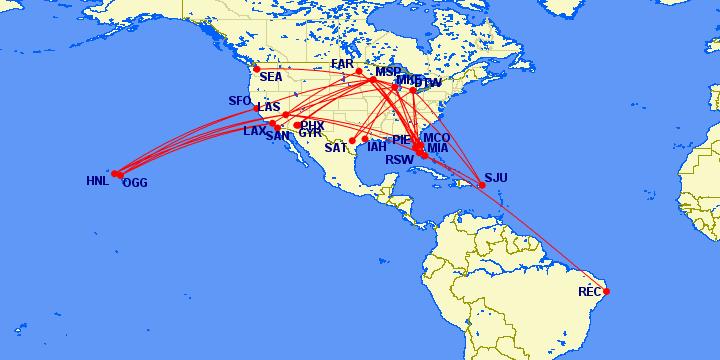 727-200 scheduled flights:  727-200 charter flights:  Download Sun Country Airlines 1998 v2 Flightplans Here Download Sun Country Airlines 1998 v2 Flightplans Here |
|
|
|
Post by perficad on Nov 19, 2022 19:30:53 GMT -5
I thought Flightplans are pretty much the same whatever of these sim's they are used in? i upgraded from FSX to P3Dv5 and not had to change any of my plans in any way There are differences that depend on each flightplan. Examples: - A lot of airport codes changed between FS9 and P3Dv5, P3Dv5 is where the sim "caught up" to modern times and codes. So even though they are the same airports (not like HKG where a new airport opened), FAJS became FAOR, KFCA became KGPI, etc. So if you don't manually change these codes, these flights will not appear at your airports and places like Africa, Indonesia, etc that had mass code changes will be very empty with no AI traffic. - Between FS9 and FSX even, some airports changed like RJNN becoming RJNA from FSX on. Many codes in Africa changed sooner than P3Dv5 as well and were first introduced in different sim versions. - Multiweek flightplans are becoming very popular in P3Dv4+ and MSFS, these are not able to be used with P3Dv3 and older. So if I ever go back and make 8-week plans for some VIP or charter carriers, the old week-long plans will become FS9-P3Dv3 while the new plans will only be able to be used in modern sims. - "//FSXDAYS=FALSE" will change the days of the week and make the scheduled airlines inaccurate if not removed in plans for use in FS9. For some plans, you are correct, it will not matter. But it will matter for any plans using any of these airports or that were made with AIFP and have need the above-quoted line deleted prior to use. Simple changes, but it's nice for the users if we do it for them. In general, plans that work in P3Dv5 will work in MSFS, but not quite always going backwards. Useful info thanks to clarify the changes. Almost of this all I found can be done automatically just by opening my flightplans in AIFP, selection P3D / FS version and clicking compile, and accepting the relevant dialog boxes. (for the FSXDAYS etc etc) It even changes the airport codes. Does AIFP allow for 2 week flightplans? I not experimented with this yet |
|
|
|
Post by chasensfo on Nov 20, 2022 2:08:46 GMT -5
Be careful, as that also gets rid of retro airports lol, not just airports that changed codes. If you just click "accept", all your traffic will start using the wrong airports in cities like Quito, Tegucigalpa, etc and it'll often mess up airports it doesn't have in it's own database (regardless of the "ZGGX" or "XDEN" code or whatever being in the airports.txt file). So then closed airports that were recreated for the 80s, 90s etc will get skipped out on.
And I think AIFP allows making up to 8 week flightplans.
|
|
|
|
Post by chasensfo on Nov 21, 2022 0:11:17 GMT -5
\\Kiwi International Air Lines 1998 (no relation to the New Zealand carrier of the same name, original plans by Paul Haak jetstar) Kiwi International Air Lines (1992-1999) IATA: KP ICAO: KIA CALLSIGN: KIWI Kiwi International Air Lines was founded in 1992 by ex-Eastern Airlines employees who pooled their money and resources in hopes of creating a successful US carrier and securing jobs for the many recently unemployed Eastern crew members. As to what role that carrier would fulfill and where it would be based, that was left up to fate, with each pilot investing $50,000 in the airline and applications being sent out for various operating certificates, including taking over the defunct Pan Am Shuttle, but Delta Air Lines was awarded those assets. Eventually, the group decided that they would start an airline from scratch, with 727s based in EWR where the only significant competition was Continental Airlines with high fares. The name "Kiwi" was selected after the flightless extinct bird of New Zealand, an analogy for the group of pilots who had their "wings clipped" with Eastern's failure. Kiwi elected to grow with a single hub for as long as practical and announced their intent to initially solely grow from EWR. 2 ex-Lufthansa 727s were used to launch flights from EWR to ATL, MDW, and MCO. Seats had a generous seat pitch with hot food served, competing with service rather than price alone. Very soon, the airline won an agreement from Virgin Atlantic to codeshare connections to\from London in MCO and EWR. Richard Branson also promoted the airline, and the carrier's first year had a new 100% flight completion rate. An order was placed for 11 Bac 1-11-500s with Husk Kits, but this order was canceled before the aircraft ever arrived. The airline quickly expanded, with flights being added as far West as Las Vegas(LAS) and to several Caribbean destinations including SXM. Though the airline started off well, by 1994, losses were mounting, and the investors, who were also active pilots, more or less organized a mutiny to oust the CEO who they blamed for the recent issues and $40 million in lost revenue. Kiwi decided to outside-hire experienced airline management rather than promote more pilots to executive positions, and the plan appeared to be working until 1996. Kiwi had added several point-to-point routes in it's network, especially from cities in Florida, when the TWA 800 and Valujet crashes resulted in knee-jerk reactions from the FAA(who later admitted said actions were just that) determined to make an example of new airlines like Kiwi with the flying public terrified of the safety of start-up carriers. Kiwi was asked to ground 25% of its fleet over a minor issue that would have normally had no serious repercussions, just as the airline was finally chipping away at its losses. Many other start-ups failed at this same period of time due to close to a majority of start-ups being grounded within a few months of one another in 1996 and 1997. Kiwi, however, survived by declaring bankruptcy, finding more funding, and restructuring to emerge from bankruptcy with a modified route network. In 1998, the airline had shed the vast majority of its routes, including all flights to Tampa(TPA), and instead focused on high-frequency service on its more profitable routes. BQN and SJU were served in the Caribbean, but no other international flights remained. Interestingly, a decision was made to serve Niagara Falls(IAG), hoping to attract Canadian passengers to connect on to vacation destinations from EWR. The carrier also operated a large number of regular charter flights from about 1996 onward, with most of them operating out of Miami (MIA) which was not a scheduled destination for Kiwi by the late 1990s. The charters mostly were from MIA and MCO to cities in the Northeast US ("snowbird" routes) and to some points in the Caribbean from Florida, EWR, and Chicago Midway (MDW). Transportation for New Orleans (MSY)-based cruises to points across the US, especially to the US West Coast usually connecting a larger city like Los Angeles (LAX) to a smaller city like Bakersfield (BFL) in a triangle route, were also regularly operated. Kiwi had gone through several subtle livery changes in its short history, but most aircraft in the fleet at the time wore the final large billboard titles livery while N8883Z wore a special livery celebrating the airline's emergence from bankruptcy. Kiwi had fallen $750,000 into debt to airport fees alone, and would yet again be grounded in 1998 by the FAA due to some maintenance discrepancies. At the same time, the DOT was investigating Kiwi for financial concerns. Right as the airline was on the verge of receiving $3 million in aid, the DOT revoked the airline's operating certificate in 1999. The airline attempted to reorganize into a charter carrier with limited scheduled routes, but the company was forced to liquidate before the certificate could be re-obtained. The FAA and DOT later admitted that several carriers that shut down in the late 1990s, including Kiwi, were asked to perform beyond non-standard expectations due to both public and regulatory pressure. These plans were made by Paul Haak for the Spring of 1998. As his plans only included scheduled flights and Kiwi operated lots of charters, some aircraft were omitted and those that were included often sat days at a time idle. I have added realistic charters to the existing fleet, created the missing 727s of the late 90s purely operating charters, and assigned the fleet to Micheal Pearson's fleet repaints. As Kiwi had many variations, each plane in these flight plans has its own repaint. Original flightplans by Paul Haak may be downloaded here: app.box.com/shared/static/2ynziivdub.zip The AIA 727-200 fleet by Michael Pearson may be found in this large package here (which also contains many new P3Dv4+ models): mpai4fs.com/2022/03/30/boeing-727-200/727-200: 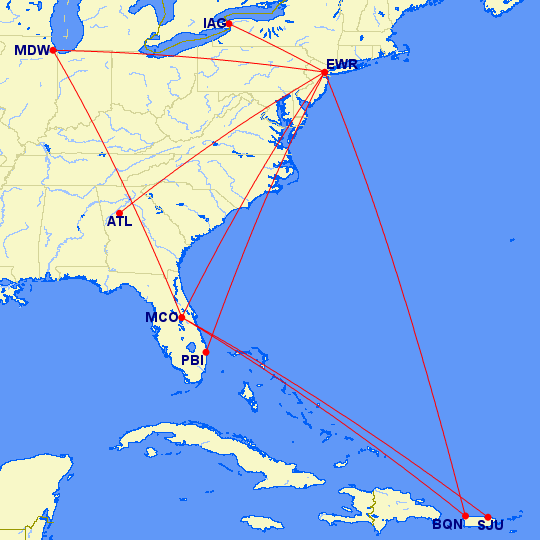 727-200 charters:  Download Kiwi International Air Lines 1998 Flightplans Here Download Kiwi International Air Lines 1998 Flightplans Here |
|
|
|
Post by chasensfo on Nov 21, 2022 3:17:56 GMT -5
\\Continental Express 1998 Continental Express operated by ExpressJet Airlines (1996-2012) IATA: XE ICAO: BTA (also use "COAX" for AI parking) CALLSIGN: JET LINK Continental Express operated by Colgan Air (1987-1999,2005-2012) IATA: CJ ICAO: CJC (also use "COAX" for AI parking) CALLSIGN: COLGAN Continental Express operated by Gulfstream International Airlines (1996-2012) IATA: 3M ICAO: GFT (also use "COAX" for AI parking) CALLSIGN: GULF FLIGHT Continental Express operated by Paradise Island Airlines (1996-1999) IATA: BK ICAO: PDI (also use "COAX" for AI parking) CALLSIGN: PARADISE ISLAND Continental Express was the regional subsidiary of US major airline Continental Airlines, based in Houston (IAH). Continental Express was formed in 1986 during Continental Airlines' major expansion phase, which saw the airline acquire New York Air, Presidential Airways, Frontier Airlines, PeopleExpress, and many assets of Eastern Airlines. The initial carriers signed to fly under the Continental Express banners were mostly airlines that supported Continental already via codeshare at its major Denver Stapleton (DEN), Miami (MIA), Washington Dulles (IAD), and Houston (IAH) hubs, including Presidential Airways (which was later acquired), Trans-Colorado Airlines, Rocky Mountain Airways, Bar Harbor Airlines, Provincetown-Boston Airlines (PBA), Britt Airways, Emerald Air (who operated the "Houston's Proud Express IAH-HOU shuttle), Royale Airlines, Air New Orleans, Southern Jersey Airways, and Gull Air. When New York Air was fully integrated, Colgan Air's "New York Air Connection" flying became part of Continental Express. Early codeshares with Mid Pacific Airlines of Hawaii and City Express of Toronto (YTZ) also saw those carriers selling tickets as Continental Express, though they continued to operate entirely independently. In these first few years, most flights were operated by aircraft with 19-seats or less like the Metroliner, DHC-6 Twin Otter, and Beech C99 and 1900C. However, larger aircraft such as the DC-9-10, 737-200, BAe-146, YS-11A, DHC-7, ATR42, and Convair 580 were also operated. By the 1990s, most of these carriers had quickly disappeared from the Continental Express fleet, as did the large variety in regional aircraft, with the remaining carriers beginning to settle more modern props like the EMB-120 and ATR. Just before 1990, Continental purchased several of the larger remaining Continental Express carriers including Bar Harbor Airlines, Rocky Mountain Airways, and Britt Airways and formed "Continental Express", which operated on the Britt Airways certificate. All aircraft were painted into the 1997-introduced "Red Meatball" soon after the merger, though the final colors introduced in 1989 began appearing on newly delivered aircraft early on as well. The newly formed carrier took over almost all Continental regional flying, which was mostly consolidated to EWR and IAH by early 1995 when Continental chose to close its DEN hub with the closure of Denver's Stapleton Airport and scaled back on West Coast flying. A hub in Cleveland (CLE) had grown into a large operation for the carrier by this time. A small number of carriers like Colgan Air continued to operate as Continental Express carriers, but the aircraft were repainted into the colors of their independent operators and out of the Continental livery. In 1996, Continental spun off Continental Express as a private company, known as "Expressjet Inc.", and signed agreements for Gulfstream International Airlines and Paradise Island Airlines to begin operating as Continental's Florida commuter system. Both of these carriers retained their own livery and sold tickets independently as well. At the time, Gulfstream International was operating a few Shorts SD3-60s in colorful special liveries (until retiring them in 1997) along with a large fleet of Beech 1900Cs. Paradise Island Airlines operated DHC-7s out of a private airport in the Bahamas known as Paradise Island (PID), owned by the parent companies of the many resorts in the region and also used by Chalk's Ocean Air Turbo Mallard seaplanes. As the Mallards were not suited for night operations, Paradise Island Air was formed as a result in 1989 and a paved runway was added to the airport. By 1998, the entire Expressjet fleet was in the final Continental Livery, and the carrier had just become the largest operator of the new ERJ-145 regional jets, with about 2 dozen in service by the time rival carrier American Eagle had begun flying just 3 examples. One of these jets wore a special livery promoting its place as the 100th aircraft in the Expressjet fleet. The ERJs replaced many 737-100\200 services for Continental out of IAH, CLE, and EWR. The jets also allowed Continental to eventually open up dozens of new destinations in Mexico, with Tampico (TAM) and Pueblo (PBC) being the first 2. A large fleet of ATR42s and ATR72s were based in EWR and IAH, mostly serving medium-sized cities or complementing short mainline routes during off-peak hours in the Northeastern and Texas Gulf regions of the US. Dozens of EMB-120s operated the majority of Express flights from the CLE hub, with routes stretching as far south as Greensboro (GSO). A smaller percentage of the EMB-120 fleet was based in IAH, serving points in the Gulf and Southeast US. Beech 1900Ds also made up a large chunk of the CLE traffic, mostly around the Midwest and Great Lakes regions but also making it to some East Coast cities like Richmond (RIC) non-stop. A few routes in Texas were operated by the B1900D fleet out of IAH, including the majority of shuttle flights between Houston's Hobby Airport (HOU) and IAH for connecting passengers. A similar shuttle was run to Houston's Ellington Airport (EFD) with EMB-120s and ATRs to support NASA traffic. Both of these routes ran under 10 minutes in air time usually. Independent Colgan Air operated a wide variety of routes to very small cities in the Northeast US, most of which no longer have airline service today. These routes mostly connected Boston (BOS), New York (LGA), and IAD with small communities to allow for online connections to Continental flights. A lone route between Atlanta (ATL) and Hilton Head (HHH) was also operated with high frequency, with no other routes being operated in the region at the time. Gulfstream International Airlines B1900Cs had a robust intra-Florida network, but also had frequent flights across much of the Bahamas, serving most commercial airports. The B1900Cs were the only aircraft in the fleet after the 1997 retirement for the Shorts SD3-60s. A new livery was introduced in 1998 by Gulfstream, with a blue belly, but by the 2000s, the carrier decided to revert to its old livery. Paradise Island Airways continued to connect PID to large cities in Southeast Florida such as Ft. Lauderdale (FLL), West Palm Beach (PBI), Orlando (MCO), and MIA, but also operated 2 roundtrips between FLL and Freeport (FPO) on Saturdays. By this time, prior service to Ft. Meyers (RSW) and Key West (EYW) had already been cut. Paradise Island Airways was purchased by Gulfstream International in August of 1998, but continued to operate independently until early 1999 when the PID airport was closed to allow for resort expansion and the airline was shut down. Gulfstream received the DHC-7s, and Chalk's Ocean Air reverted back to a water-only operation with PID thus becoming a seaplane base rather than an airport. Expressjet continued growing into the world's largest ERJ operator, eventually operating a large number of ERJ-135s as well, and the carrier operated a large chunk of Continental's flights in the post-9\11 recovery years. The ATRs and EMB-120s were retired by the mid-to-late 2000s in favor of an all jet fleet. Continental launched the "Continental Connection" brand in 2001, and soon Coglan Air and Gulfstream International were signed to long-term contracts with B1900Ds that were quickly painted into full Continental colors. Other carriers were signed through 2010, including Chautauqua Airlines with ERJs and a short-lived CRJ-200 contract out of CLE and IAH, SkyWest Airlines with EMB-120s out of IAH, Commutair with B1900Ds and later DHC-8-100\200s out of EWR, GP Express Airways with B1900Ds out of Kansas City (MCI), Republic Airways with Dash-8 Q400s out of EWR, and Cape Air with ATR42s in Guam (GUM). Colgan Air expanded to operate Saab 340s out of IAH and a large fleet of Q400s out of EWR, losing one of the latter in a widely publicized crash in Buffalo (BUF) in 2011. When United Airlines and Continental Airlines merged in 2012, all remaining Continental Express carriers became United Express carriers. Gulfstream International still exists today as independent Silver Airways with ATRs, while Coglan Air disappeared into Delta Connection carrier Endevaour Airlines which was formed by merging that carrier with Mesaba Airlines and Pinnacle Airlines. Keep in mind that only ExpressJet aircraft were operated in the full Continental livery at this time (Colgan and Gulfstream B1900s didn't get the livery for several years yet). There were a few special liveries for Gulfstream International, including an aircraft in a Arizona Airways hybrid livery, an aircraft with no stripes, and a late-1998-introduced blue-belly livery with a "Continental Express" sticker by the boarding door. For parking purposes, to keep ERJs on the proper gates and ATRs, EMB-120s, and B1900Ds in the proper parking, I recommend using "BTA,COAX" for jets and "COAX" for props. I will be coding airports accordingly in retro ADEs. For independent carriers, use their own code ahead of "COAX" as they may have different parking at the hubs\not have COAX-coded parking at their destinations. Paradise Island Airport (PID\MYPI) is not included in flight simulators of any version, however, an FSX scenery has been made for it. I have updated the scenery for use in P3Dv4+ by converting the textures to DXT5 and modified the ADE by making the parking and ground markings more realistic and adding the water runway for Chalk's flights. Flightplans by RAI member cmd320 mostly with me just doing some of the Florida stuff. The Paradise Island Airport (PID\MYPI) FSX scenery may be found here: simviation.com/1/search?submit=1&keywords=MYPI+Nassau%2C+Bahamas+2020&x=0&y=0Download my updates to this scenery to improve parking and convert the airport to work in P3Dv4+ here: drive.google.com/drive/u/1/folders/1BYe38Li41zt7XQ4XpYrP-AZgY9KVctQOSome repaints are needed, and I may have missed some. Repaints are still needed for the Colgan B1900Ds and Gulfstream B1900Cs as far as I know (as I already painted Arizona Airways, I will make that hybrid soon). The following are available: AIM ERJ-145 fleet by Chris Gorodetzky: drive.google.com/drive/u/1/folders/1_fy-cp7tY0Xq7qCAzYEmwqiYVk6_y2ZFOSP ATR72-212 (-200s were actually used at this time): library.avsim.net/search.php?SearchTerm=continental_express_oc_atr-72-212_n69902.zip&CatID=root&Go=SearchOSP ATR42-300 (CapeAir and "Connection" instead of "Express titles): library.avsim.net/search.php?SearchTerm=coax_atr42.zip&CatID=root&Go=SearchAIA EMB-120: library.avsim.net/search.php?SearchTerm=aia_emb_120_continental-exp.zip&CatID=root&Go=SearchAIA EMB-120 Gulfstream International (not operated until the 2000s, use as a stand-in for the B1900 if you wish): library.avsim.net/search.php?SearchTerm=aiaemb120gfs.zip&CatID=root&Go=SearchMilton Shupe (MSAI) DHC-7 Paradise Island Airways (Part of a package, an AI version was made of this aircraft but requires a conversion with ModelConverterX): simviation.com/1/search?submit=1&keywords=FSX+Dash-7+Paradise+Islands+Airlines+5+PACK+&x=0&y=0HTAI B1900D (Commutair and "Connection" instead of Express titles): library.avsim.net/search.php?SearchTerm=htai_b1900d_commutair.zip&CatID=root&Go=SearchHTAI B1900C Colgan Air: library.avsim.net/search.php?SearchTerm=ai_b1900c.zip&CatID=root&Go=SearchERJ-145 operated by Expressjet:  ATR42\72 operated by Expressjet: 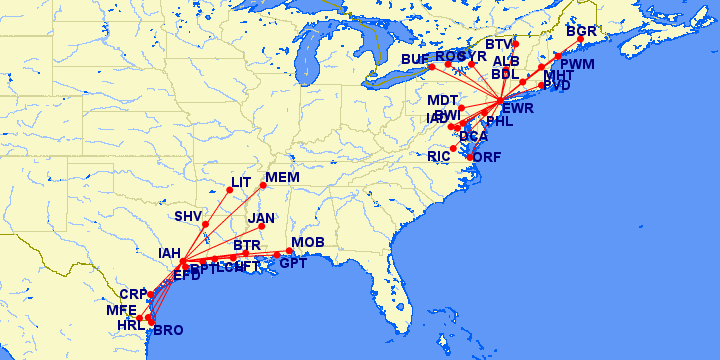 EMB-120 operated by Expressjet: 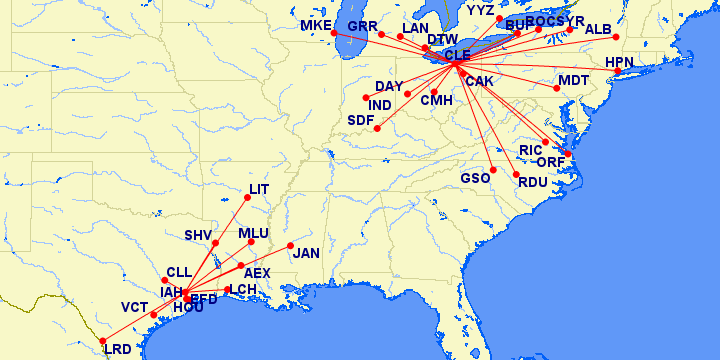 DHC-7 operated by Paradise Island Airways: 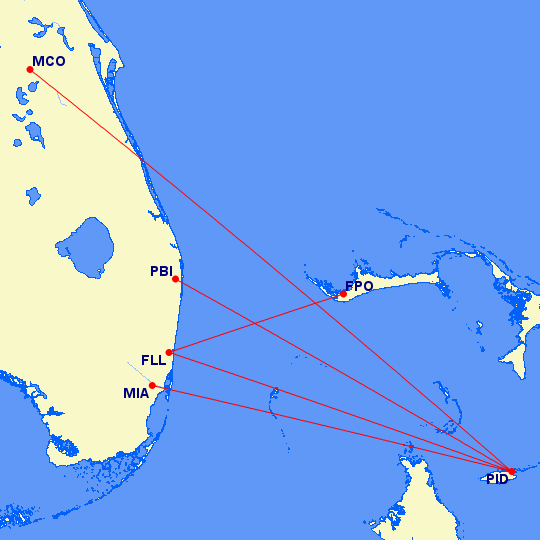 Beech 1900D operated by Expressjet: 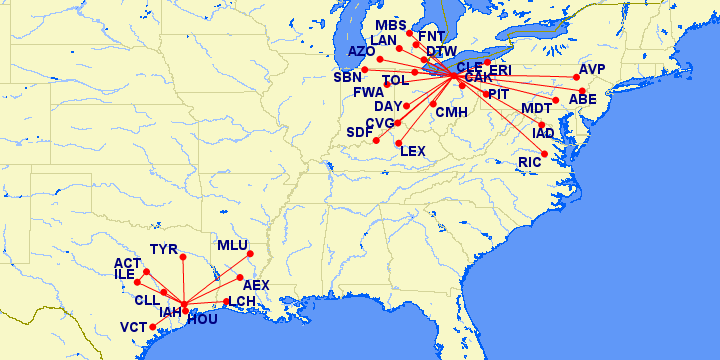 Beech 1900C\D operated by Colgan Air:  Beech 1900C operated by Gulfstream International Airlines: 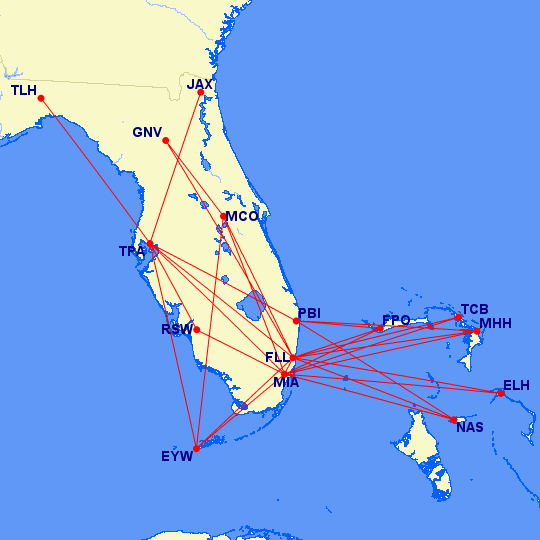 Download Continental Express 1998 Flightplans Here Download Continental Express 1998 Flightplans Here |
|
|
|
Post by bensplanes on Nov 21, 2022 8:03:29 GMT -5
Thanks for this one!
|
|
|
|
Post by chasensfo on Nov 22, 2022 9:18:53 GMT -5
\\US Airways Shuttle 1999 US Airways Shuttle (1992-2003) IATA: TB ICAO: USS CALLSIGN: US SHUTTLE US Airways Shuttle, based in New York (LGA), was one of two major high-frequency shuttle operations operating in the busy US East Coast corridor between LGA, Washington DC (DCA), and Boston (BOS) during the 1990s and 2000s. Though the carrier was a fully owned subsidiary of US Airways, it operated on its own certificate, which it inherited from Trump Shuttle in the early 1990s. Though the airtime on these flights is usually 30-40 minutes, for decades they ran with the reliability of public transit shuttling passengers all-day long with departures at least every hour between 0630 and 2330. Initially, these flights were pioneered by Eastern Airlines, who used Lockheed Electras and allowed walk-up tickets with no reservations and guaranteed a seat would always be available. As such, a spare Electra was always on standby, allowing for businessmen to show up for departures every 30-60 minutes and board the aircraft like a bus, paying for a ticket on board. In LGA, these flights used the Marine Terminal separate from the rest of the airport, allowing for very quick curbside-to-gate transit. Eventually, Pan Am began to compete, and both airlines were flying Boeing 727s with very high frequency, as Eastern attempted to defend its longtime service. As Eastern and Pan Am began to fail at the dawn of the 1990s, Pan Am sold its Shuttle Assets to Delta, who began operating the Delta Shuttle in 1991, and Eastern sold its assets to Donald Trump, a New York businessman at the time, who founded Trump Shuttle in late 1989. Trump Shuttle was planned for major expansion beyond the shuttle network over the next few years, and the aircraft featured expensive leather interiors with gold plated armrests and various other features to give the passengers an executive feel in contrast to the high-density Delta 727s. Though the service was very popular, and despite the carrier securing frequent charters on weekends when there was much less demand in the shuttle corridor, the airline bled money and Donald Trump quickly sold the operation, along with slots and assets at LGA, DCA, and BOS, to USAir by 1991 or so. In the winter of 1992, USAir began operating the USAir Shuttle on the Trump Shuttle certificate, with the ex-Trump aircraft retaining a white fuselage in lieu of the standard USAir bare metal. Both Delta Shuttle and USAir Shuttle continued all-727 operations on mostly the same routings all through the decade but eventually learned to coexist by the late 1990s, with USAir ending the BOS-DCA route and Delta readjusting its schedule so that most of its departures were 30 minutes off from the next USAir departure rather than in direct competition. By that time, US Air had already gone through a 1997 rebranding as "US Airways", and the shuttle was renamed the "US Airways Shuttle". Only 1 727-200 got the new livery by the end of the 1990s, with the aircraft operating in "USAir" titles for about 2 years despite the new branding. In late 1999, US Airways decided to expand its operation by dedicating a DC-9-30 to a new shuttle route to Washington Dulles (IAD), which had become a hub for US Airway's ULCC subsidiary Metrojet, and began high-frequency flights to LGA. After the summer of 1998, USAir began retiring the 727s in the shuttle operation. A pair of 737-300s joined the fleet for a very short time between 1999 and 2000 to cover for some retirements while a few specially configured all-economy A320s were awaiting delivery. 1 A320 joined the fleet by September of 1999 while a 2nd arrived just before the end of the decade. By 2001, US Airways Shuttle became an all-A320 operation, but the attacks of September 11th greatly impacted these flights for both security protocols and a dramatic drop in passengers due to fears of repeat attacks on New York or Washington DC and because security lines in the weeks after 9\11 were often hours long, making the train more appealing. Some frequencies were replaced temporarily with Jetstream 32s operated by a US Airways Express carrier, to the dismay of travelers. In 2002, A319s began replacing the A320s, but US Airways decided to end the operation in 2003. Delta continued its operation but discontinued the use of the Shuttle livery by the late 2000s. The shuttle was last operated by EMB-175s operated by Compass Airlines under the Delta Connection banner, with no special configuration. These flights were briefly attempted on the West Coast, with flights between SFO and LAX which featured check-in up to 20 minutes prior to departure, the use of a dedicated security line and dedicated ticket counters, boarding gates close to security checkpoints, and complimentary snacks and newspapers. These flights only lasted about 1 year, and then were scrapped while the East Coast flights became mainline A319s. As 1999 was much more interesting with more livery variations and 4 kinds of aircraft in this small operation, I decided to do that year instead of 1998. These flights did have their own gates, and I have ADE files for 1998 versions of BOS\LGA\DCA\IAD in progress. As one rotation on Mondays didn't fit into the DC-9s schedule, I added it to a 727-200, which made very few rare appearances in IAD in 1999. The following repaints are available, The repaints are completed, but the Airbuses are still needed on modern models as far as I know. Note that the DJC Airbuses convert easily with Model Converter X for use in P3Dv4+: AIA 727-200 new colors (part of package): mpai4fs.com/2021/12/26/us-airways-727-200/DJC A320, AIA 727-200, 737-300v2 New Livery (All FS9 Native; also includes JS31 and A319): library.avsim.net/search.php?SearchTerm=us_airways_shuttle_oc_pack_a319_a320_b722_b733_baejs31.zip&CatID=root&Go=SearchAIA 727-200 old colors (part of a package): library.avsim.net/search.php?SearchTerm=usair_fleet_1993.zip&CatID=root&Go=SearchAIG DC-9-30: library.avsim.net/search.php?SearchTerm=jhmusadc930ai.zip&CatID=root&Go=SearchA320\727-200\737-300: 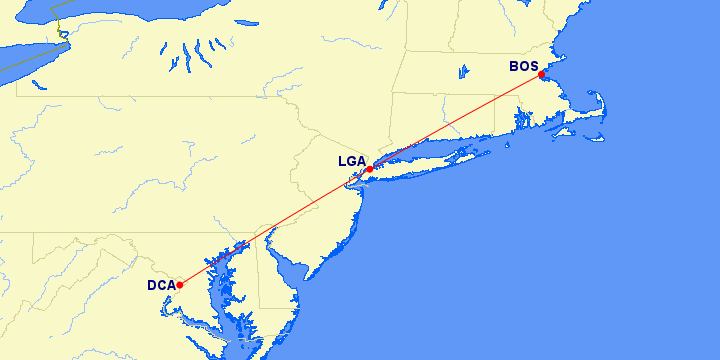 DC-9-30:  Download US Airways Shuttle 1999 Flightplans Here Download US Airways Shuttle 1999 Flightplans Here |
|
|
|
Post by chasensfo on Nov 23, 2022 6:42:14 GMT -5
Repaint links added for America West (Mesa\America West CRJ-200s) \\Southwest Airlines 1998 v2 (23NOV22; modified flight plans for Mike Pearson's 5 variations of the 737-200 in the 90s livery as well as re-numbered the aircraft so that future variations are easily added). Southwest Airlines (1971 - Present) IATA: WN ICAO: SWA CALLSIGN: SOUTHWEST Southwest Airlines is a major US airline the global pioneer for the low-cost carrier model, and one of the world's largest carriers, based at Dallas Love Field (DAL). Southwest Airlines was the brainchild of 3 Texas businessmen, Lamar Muse, Rollin King, and Herb Kelleher, who sat down in a Texas bar in 1966 and drew a "triangle" route between DAL, Houston (IAH), and San Antonio (SAT) on the back of a cocktail napkin and decided to start an airline. The company was incorporated the following year but was quickly challenged in courts by established Texas-based carriers Texas International, Braniff, and Continental Airlines who opposed the carrier's plans to circumvent airfare regulations by operating intra-state only and thus being able to set their own fares to undercut the competition. Ultimately, Southwest won and started service with 3 737-200s in 1971, painted with the titles "Southwest Airlines" written from the aft fuselage all the way bending up to the tail and with a more greenish hue than the brown livery worn for decades to come which was later introduced. Within the first few years, Southwest had found great success, known for its scantly clad "cowgirl" flight attendants wearing very short "hot pants" and for its "happy hour" flights with free liquor, with Southwest at one point being the largest distributor of "Wild Turkey" bourbon. By 1973, Southwest had turned a profit and expanded across Texas, and would continue to post a profit for the next 46 years despite non-stop expansion. Owing to its success, Southwest Airlines admitted that its strategy was closely based on that of Pacific Southwest Airlines (PSA), based in San Deigo (SAN), and undercutting the established airlines on intra-California routes since the 1950s. The deregulation of the US Airline industry allowed Southwest to freely expand beyond the borders of Texas, but it also allowed the established carriers to match its low fares and compete on its routes with far fewer restrictions than before. Preparing to first launch flights to New Orleans (MSY) and begin a rapid expansion, Southwest Airlines leased some 727-200s from Braniff that same year. However, in 1979, the opening of the new Dallas Ft. Worth Airport (DFW), located further from Dallas than DAL, prompted the Texas Aviation Authority to demand all airlines move their flights to the new airport. When Southwest Airlines refused and announced their intent for rapid expansion at DAL to fill up the now-abandoned terminal, the Civil Aeronautic Board (CAB) responded with the "Wright Amendment". The Wright Amendment, in hopes to force Southwest's eventual move to the new and expensive DFW, restricted flights from DAL to non-stop to any state that was not bordering Texas. Furthermore, any multi-stop flights from DAL could be sold as a "through flight" (or single ticket\aircraft service) to destinations beyond neighboring states. Despite this huge disadvantage, Southwest stuck it out at DAL, and developed a "multi-stop" model developing hubs all across the United States, where to this day, a majority of its flights operate a same-plane multi-stop service between up to 6 cities with very short turn-around times where passengers remain on the plane between stops if not getting off in the arrival city. To fuel this model, many of Southwest's flights were scheduled for 15-20 minute turnarounds, which would remain the case until the 2000s. DAL-MSY interstate routes began in 1979 as planned, and in 1980, more interstate routes were to Tulsa (TUL), Oklahoma City (OKC), and Albuquerque (ABQ). More routes followed in 1982, with multi-stop flights from DAL to Las Vegas (LAS), Phoenix (PHX), and Kansas City (MCI), though tickets could not be sold directly from DAL to these destinations as a single purchase. The 727-200s were returned to Braniff shortly after being acquired, but a second 727-200 lease from Braniff was made again in the early 80s, when Southwest changed its livery to a darker brown, with the other colors similar to the well-known tan\brown livery. Those 727s were gone by 1985, and it would be the last time Southwest flew aircraft other than the 737, with 737-500s first arriving around this time. By this time, Southwest had also started to accept the first of hundreds of 737-300s it would add to become the backbone of its fleet for decades to come. By 1986, Southwest had begun to develop focus cities in several cities outside of Texas including ABQ, PHX, and LAS, and expanded across much of the United States, though service to Denver (DEN) was dropped that year and would not resume for over 2 decades. Southwest also had started its first intra-California route from San Diego (SAN) to San Francisco (SFO), one of PSA's trunk routes, by this time and that would remain its only such route until 1989 when another route from SAN to Oakland (OAK) was started. Lamar Muse had left Southwest in the early 80s to start his own airline, Muse Air, which operated DC-9s and MD-80s from Huston's Hobby Airport (HOU) with a similar model to Southwest. Muse Air expanded West to add several routes to the West Coast from a new LAS hub including SFO, San Jose (SJC), and Los Angeles (LAX) as well as routes as far East as Florida and changed their name to "TranStar Airlines" soon after. Southwest Airlines bought out TranStar Airlines in 1987, abandoned the DC-9s and MD-80s, and grew in LAS and HOU. Though Southwest continued expanding Eastward, it was not until the mid-1990s that Southwest began to seriously compete in the West Coast market after another merger with Salt Lake City (SLC)-based "Morris Air". Morris Air had very rapidly established an extensive point-to-point route network across Utah, Idaho, Washington, Oregon, and California with a fleet of 737-300s. After the merger with Morris Air, Southwest was now a major competitor to United Airlines and Alaska Airlines, which currently dominated most West Coast Routes. Hubs were established in Los Angeles (LAX) and OAK, and Southwest quickly grew into the largest carrier at several California airports. United responded by launching "Shuttle by United" to offer all-coach, no-frills, high frequency, low-fare service on virtually every route Southwest operated on the West Coast using 737-300s and 737-500s. Thanks to this competition, routes like SFO-LAX saw daily flights like never before, making the West Coast corridor one of the busiest areas for commercial flights on Earth through the 1990s. Southwest also started introducing Special liveries frequently by this time, beginning to roll out "state flag" aircraft, liveries to celebrate its accomplishments, and 3 "Shamu" Orca whale liveries to advertise new a partnership with Sea World. PHX, Chicago Midway (MDW), Baltimore (BWI), Oakland (OAK), St. Louis (STL), Nashville (BNA), and MCI by the late 1990s, and was the launch customer for Boeing's Next Generation 737-700 in 1997, with hundreds on order. In BWI, Southwest found itself in a war with US Airways, who reacted to its explosive growth in the city by starting its own no-frills LCC as United had done, called US Airways Metrojet. Many of Southwest's BWI routes, along with several of its Florida routes to other cities, faced heavy high-frequency competition from US Airways Metrojet. By 1998, Southwest was flying a huge fleet of 737-300s and 737-200s alongside a fleet of 25 737-500s and a quickly expanding fleet of brand new 737-700s. Though any Southwest pilot could fly any plane in the fleet and the types frequently subbed on routes, some routes went to specific aircraft, like all recently-launched routes to Orange County (SNA) using the 737-500, which also was the only aircraft serving some smaller cities in Texas. 737-200s were used most heavily in the Eastern and Southern US, with just 1 route to the LAS hub and not serving most West Coast cities. 737-700s were assigned mostly on multi-stop transcontinental routes, especially those with legs over 2 hours which were uncommon at Southwest still, like BNA-LAX. As 737-700s were being added quickly and Southwest pilots were doing familiarization training on them, the 737-700s popped up all over the system in 1998 despite not being listed as flying many routes. The 737-300s were the backbone of the fleet flying almost every route in the system, but the fleet was at its peak with just 4 more of the type ever joining the Southwest Airline fleet after 1998. Most special liveries were on the 737-300 fleet, while the 737-200 fleet had several specially named aircraft. The 737-500 fleet has 2 special "Shamu" liveries, and in May 1999, 737-700 "Nevada One" was introduced. Due the nature of Southwest's operation, the equipment types in the schedule did not always match up on a weekly logic needed for compiling flight plans, so I ended up with close to 50 aircraft when compiling (only Saudia ever had more equipment issues)! I patched in the routes I could, and most of the rest fit with the aircraft added in 1999, which included 4 737-300s and 31 737-700s. I have segregated these aircraft if you wish to exclude them, but as the project uses 1999 airlines as well, I personally think this is acceptable to avoid close to 10% of the schedule from not being operated. The exception to that segregation is Nevada One was meant to be delivered in 1998, but I included it in these flight plans although it didn't arrive until May of 1999. Simply assign a standard livery 737-700 to Nevada One if you don't wish to see it. The most significant changes for Southwest in 1998 were the addition of flights to Manchester (MHT) and the draw-down of flights to SFO which would be suspended for over 10 years from early 2001. Interestingly, Shuttle by United was wound down as having "failed" to contain Southwest by the end of the 1990s. Despite this, United has succeeded in chasing Southwest off from SFO (only PHX, SAN, and ABQ served at this time) simply due to all the ATC delays caused for the whole airport when the massive banks of flights from Southern California would get delayed and throw Southwest's 15-20 minute turns into disarray forcing the cancellation of dozens of "multi-stop" flights to other cities. Meanwhile, the Metrojet rivalry would go on until US Airways stopped the program to save costs not long after 9\11. Southwest Airlines would go on to become a late customer of the 737-800 while also adding large numbers of 737MAX7s and 737MAX8s. Southwest would merge with ATL-based AirTran Airways inheriting a large fleet of 737-700s and new cities like Akron (CAK), now serving almost every large domestic market in the entire United States with over 700 aircraft. The Wright Amendment, preventing DAL expansion slowly allowed a few new states like Missouri to have nonstop flights over time and was lifted partially in 2006, allowing Southwest to begin "multi-stop" flights from DAL to anywhere else, before being eradicated in 2014. Eduardo Villanueva has painted the fleet on the FAIB 737-200\300\500\700 (FS9 native, non-HD) on Avsim as: library.avsim.net/search.php?SearchTerm=southwest_airlines_1990s_fleet.zip&CatID=root&Go=SearchMicheal Pearson's P3D-native 737-200 fleet repaints (part of a large package): library.avsim.net/search.php?SearchTerm=faib_737-200_swa.zip&CatID=root&Go=Search737-700: 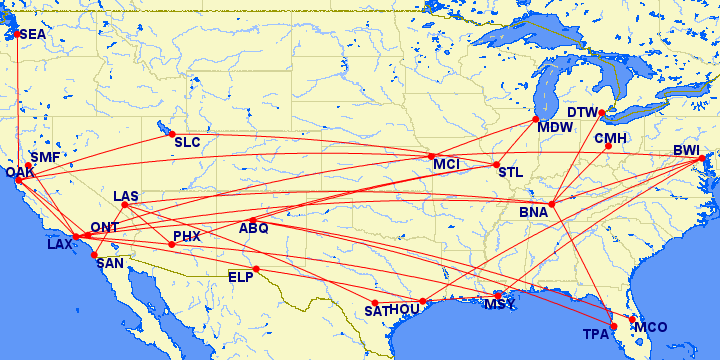 737-500: 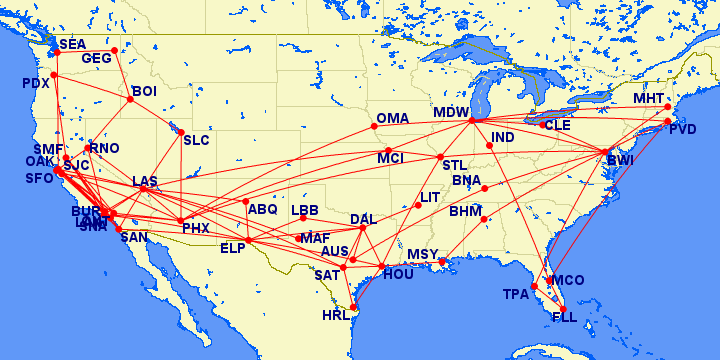 737-300: 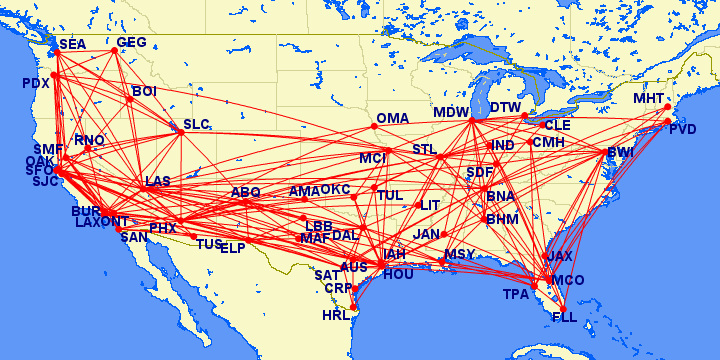 737-200: 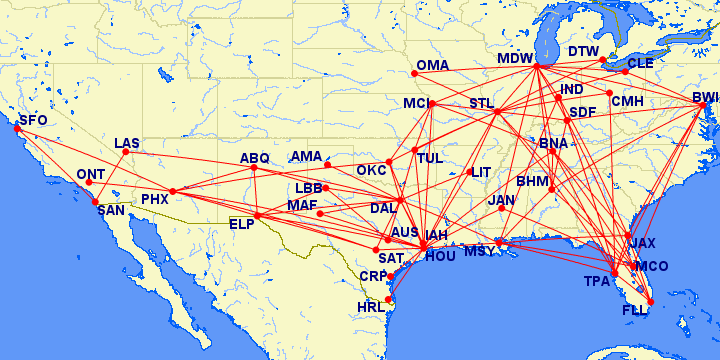 Download Southwest Airlines 1998 v2 Flightplans Here Download Southwest Airlines 1998 v2 Flightplans Here |
|
|
|
Post by chasensfo on Nov 23, 2022 6:58:39 GMT -5
\\Delta Air Lines 1998 v2 (23NOV22; added all Michael Pearson's relevant repaint variations, renumbered the aircraft list to allow for quick updating for future variations) Delta Air Lines (1929 - Present) IATA: DL ICAO: DAL CALLSIGN: DELTA Delta Shuttle (1991-2008) IATA: DL ICAO: DALS (this is just for parking at LGA\BOS\DCA) CALLSIGN: DELTA Delta Express (1996-2003) IATA: DL ICAO: DALE (this is just for parking, also use "DAL") CALLSIGN: DELTA Delta Air Lines is a major US carrier and one of the world's largest and oldest airlines, based in Atlanta (ATL). Delta was founded in 1925 as Huff Daland Dusters, Inc, a crop dusting company in Macon, Georgia (MCN) (not far South of ATL). The carrier's name was changed to "Delta Air Service" (due to their operations in the Mississippi Delta area) in late 1928, and passenger operations finally began the following year in 1929 with Stinson Model A transports. Initially, Delta operated outside of Georgia serving points in Louisiana, Mississippi, and Texas while flights to ATL were finally added in 1930. That same year, the airline obtained a lucrative airmail contract and became incorporated as "Delta Air Corporation", now headquartered in Monroe, Louisiana (MLU). By 1934, flights extended Eastward to South Carolina, and the carrier grew rapidly. The airline had its first fatal accident the following year when the prop blade on a Stinson Model A failed and the aircraft lost control and crashed in a Texas field. Despite this early disaster, growth continued and in 1941, the carrier moved from MLU to ATL to take advantage of the larger passenger market. During WWII, the network was expanded but the fleet was rather stagnant, though just after the end of the war, the carrier became "Delta Air Lines" in 1945. Like most airlines in that time period, Delta very quickly added various types of surplus military aircraft to the fleet, which were available cheaply and in high quantity. These included aircraft such as the DC-3, C-46, and DC-4, which allowed Delta to fly longer routes at higher altitudes, including the first-ever flights between Chicago (MDW) and Miami (MIA). Freight operations started the following year, and Delta would continue dedicated freight operations over the next several decades. In the early 1950s, Delta added international flights to Havana (HAV) and acquired Chicago-based Chicago and Southern Air Lines in 1953, briefly operating the carrier as a subsidiary called "Delta-C&S" until 1955 when it was fully absorbed into Delta. The route network was now stretching all across the Southeast, East Coast, and Midwest USA. In 1959, Delta became one of the first jet operators on earth with the DC-8-50, and the Convair 880 in 1960. These aircraft also introduced the first rendition of the now famous "Widget", which would transform several times as Delta modified their livery frequently through to the 1980s. Delta's first transcontinental route opened soon after in 1961, with nonstop flights from ATL to Los Angeles (LAX) and San Francisco (SFO). DC-9s joined the fleet in 1965, and Delta rapidly phased out prop liners for the new jets, becoming an all-jet airline in 1970. Like many major airlines, Delta was an early 747 operator not long after the transition to becoming an all-jet carrier, but the type would only serve the fleet for a few years. In 1972, Boston (BOS)-based Northeast Airlines was acquired, and Delta was now one of the largest US carriers now with a large hub in the Northeastern US. L-1011s arrived in the early 1970s and quickly replaced the 747s and became the mainstay of the widebody fleet for the next 2 decades. Delta deployed the L-1011s on routes all across the country, including to smaller cities that only see regional jet service today and frequently used the type at New York's congested La Guardia Airport (LGA) until about 2001. Delta was a very early operator of both the 767-200 and 757-200 at the dawn of the 1980s, and the aircraft were deployed all across the country and allowed for new non-stop routes from Atlanta to secondary airports like Ontario (ONT) and Orange County (SNA) which the L-1011s were too big for. Delta's first 737-200s arrived around the same time, and the Convair and DC-8 fleet were retired, except for the converted DC-8-73 fleet which kept flying until the late 1980s. By this time, Delta had also developed Cincinnati (CVG) and Dallas (DFW) into hubs and developed the "Sky Miles" program well before most carriers embraced frequent flyers. The 1980s were a rough time for Delta, with frequent fatal pilot error-related accidents and high-profile mishaps, which even included a crew accidentally shutting down the engines on departure from LAX in a 767 and restarting them just feet above the Pacific Ocean...to then continue to CVG! Despite this, Delta took the bad press to heart and became one of the safest carriers on earth over the next decade. In 1987, Delta made a major move by acquiring Salt Lake City (SLC)-based Western Airlines, a major US carrier with routes all across the country, down to Mexico, and an extensive Hawaiian network. Delta acquired large hubs in LAX and SLC, DC-10s, and the recently established Western Express network operated by SkyWest Airlines. When Pan Am began to fall apart in the late 1980s, Delta was very involved in the restructuring process, and to this day is often accused of purposely setting up Pan Am to collapse in order to cannibalize its assets. When Pan Am failed in 1991, Delta very quickly acquired the carrier's New York (JFK) hub and the famous "Pan Am Worldport" terminal, along with Airbus A310s, the 727-200 shuttle operation flying between LGA, BOS, and Washington National (DCA), and routes to various destinations in Europe, South America, and the Caribbean. Delta also acquired some Pacific routes left over from United's major purchase of most of these routes, and this was the basis from which the Portland (PDX) hub was founded to allow for MD-11 service to various destinations in Asia including Osaka (KIX), Nagoya (NKM), Toyko (NRT), Fukuoka (FUK), Seoul (GMP), Bangkok (GMP), Hong Kong (HKG), and Taipei (TPE). Some flights to Asia also began from the new LAX hub. By the mid-1990s, Delta's MD-11 fleet was at its full capacity and the airline considered extending service to Manila (MNL) and other cities, but instead by the late 1990s, the Asia network had already considerably shrunken. Delta became the launch customer of the new MD-90 jets and deployed them first from the Dallas (DFW) hub out West where the MD-88s largely didn't serve due to performance issues in mountainous areas, namely SLC. By 1998, Delta was serving just about every large and medium-sized market nonstop from ATL, and the MD-88 was the backbone of the fleet. JFK had nonstop flights all over Europe, mostly with 767s, and some 1 stop services to countries as far away as India. From ATL, DFW, and CVG, Delta served most cities with airline service in the Eastern US. DFW, PDX, and SLC were used mostly for connecting passengers to points West. While most airlines moved to the hub and spoke service, Delta still had a significant number of point-to-point routes, especially in the Mississippi Delta region where the airline had first started. Small focus cities were operated in MLU, Baton Rouge (BTR), Birmingham (BHM), New Orleans (MSY), Shreveport (SHV), Phoenix (PHX), and Las Vegas (LAS) among a few others. Delta Express had recently been launched with 737-200s, primarily based in Orlando (MCO) but also serving routes from other cities in Florida, to compete with Southwest and US Airways Metrojet on flights between Florida and the Eastern US. Agreements were in place with Aeromexico, Sabena, and Air Jamaica and Delta often ground-handled these carriers and was awarded great connectivity on their flights. Delta Connection regional operations were set up across the country, with SkyWest serving the PDX, SLC, and LAX hubs, Atlantic Southeast Airlines (ASA) serving the DFW and ATL hubs, Comair serving the CVG hub, and Business Express serving the BOS and JFK hubs. While the DC-9s were retired, 727s and L-1011s were still operated in large numbers, with the L-1011-500s doing most of the international routes, while the MD-11s also did mostly international flights sans a few en-route stops between hubs like ATL-PDX. A new livery was introduced in 1997, dubbed the "Ron Allen" livery, and it had been applied to a decent number of aircraft, though no L-1011s were ever painted nor were any MD-90s before another new livery, dubbed "Deltaflot" came out in 2000. Between 1997 and 1998 Delta acquired several 737-300s from Western Pacific and other carriers, most were in the new livery already. The first 2 737-800s were in the fleet in 1998, and both were in the new livery. There were a few special livery variations, but for the most part, all the colorful special liveries from earlier in the 1990s were gone. There were no Olympic liveries left from the 1996 ATL Olympics anymore at this time, and the SLC 2000 liveries were yet to be applied. While the DFW hub was still large, both DFW and PDX would soon be de-hubbed, and there were already reductions at these airports. Delta would continue to grow, adding huge numbers of CRJs to its regional partners and adding 777s to replace the MD-11s by the early to mid-2000s. A huge fleet of domestic 767s and stretched 757-300s eventually replaced the L-1011s, including stretched 767-400s, while the Delta Express and Delta Shuttle operations (no more dedicated fleet) would eventually close. Delta launched its own low-cost subsidiary named "Song" in the mid-2000s, which it used as the test bed for its modern IFE, and not long after began a merger with Northwest Airlines, which made it the largest airline in the world at the time. The CVG hub was closed soon after, and Delta became a major Airbus operator, continuing the tradition today with new A330-900NEOs and A350-900s. Delta is now regarded by many as the "best" of the major US airlines and is one of the largest carriers on earth. The MD-90, MD-88, and 777 fleets were all retired in 2020 in response to the pandemic, and the 717 fleet is said to be retired by 2024. These flight plans include Delta Express and Delta Shuttle, but all the regional carriers will be available separately in the future. I did the flights to Asia and Hawaii, but the rest of this massive airline was quietly done over the last year by cmd320 who does not wish to take much credit, but really did a HUGE thing for the community with this one. The fleet is broken down into many variations to utilize the available repaints by Michael Pearson and others, though right now there is no different model for the L-1011-250 vs the Tristar 1. As is unavoidable usually when trying to take the largest few carriers on the globe and squeeze them into weekly flight plans, a small number of ferry flights were required to keep the fleet size correct. Flight plans by RAI member cmd320 and myself. All repaints are available, and hopefully, in the future, the HJG L-1011 and L-1011-500 will replace the current dated versions of that aircraft: FSPX MD-11 by Ranmori Scythe: drive.google.com/drive/folders/1nDK1zb_THDo3JmsMrDVTCD5QJ1xUrbvF?usp=sharing FSPX MD-11 by Michael Pearson: library.avsim.net/search.php?SearchTerm=fspxai_md-11_dal_redux.zip&CatID=root&Go=Search and the service pack for these aircraft here: library.avsim.net/search.php?SearchTerm=mpai_service_pack_2020-5-13.zip&CatID=root&Go=Search DWAI L-1011-1\250: library.avsim.net/search.php?SearchTerm=waldron_l1011_delta_airlines.zip&CatID=root&Go=Search CDAI L-1011-1\250\L-1011-500: library.avsim.net/search.php?SearchTerm=dal_ai.zip&CatID=root&Go=Search FAIB 767-300: library.avsim.net/search.php?SearchTerm=faib_767-300_dal.zip&CatID=root&Go=Search FAIB 767-200: library.avsim.net/search.php?SearchTerm=faib_767-200_dal.zip&CatID=root&Go=Search AIA 727-200 P3D-native fleet repaints (part of a large package): mpai4fs.com/2022/03/30/boeing-727-200/AIG 757-200, AIA MD-90\88, 727-200, FAIB 737-200\300, PAI L-1011\L-1011-500, and many other aircraft (All FS2004 native): library.avsim.net/search.php?SearchTerm=dalfleet90s00s.zip&CatID=root&Go=Search MD-11: 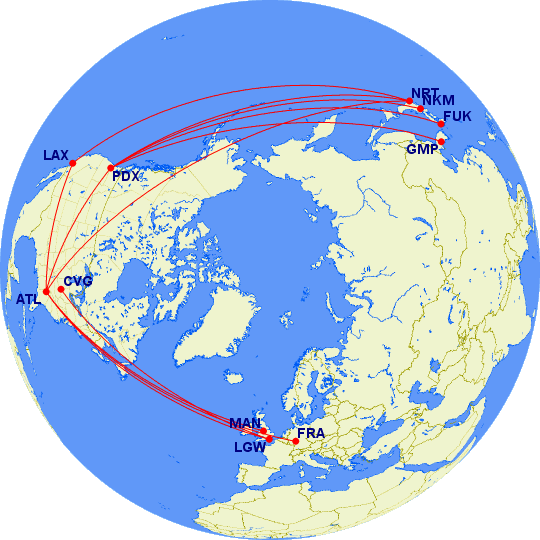 L-1011-500: 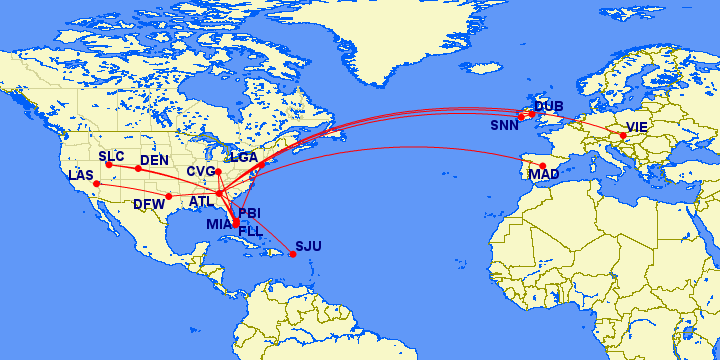 L-1011-1\250: 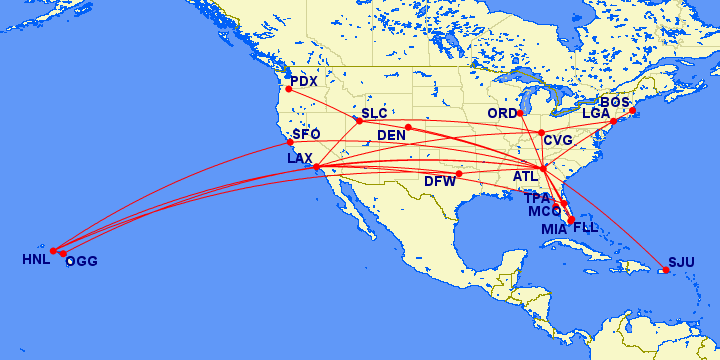 767-300ER: 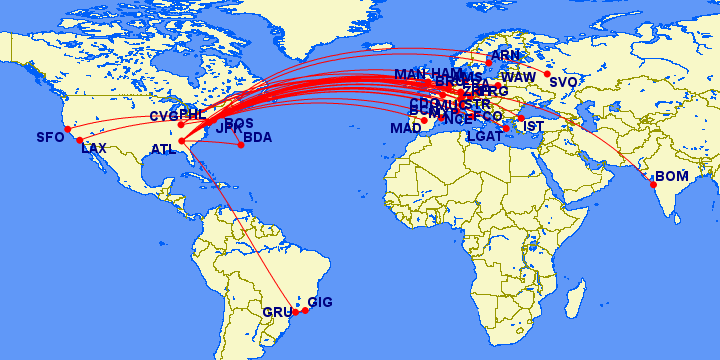 767-300: 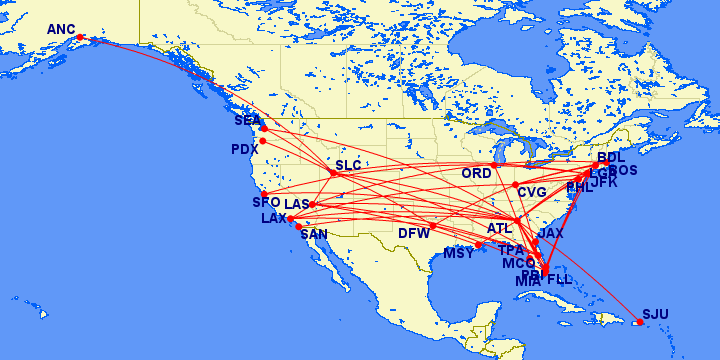 767-200:  757-200: 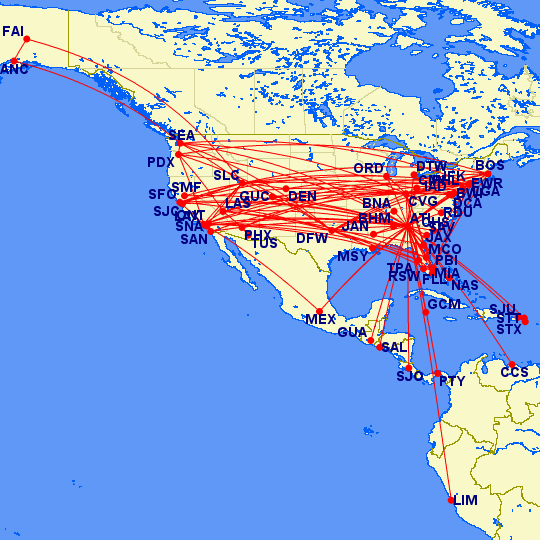 727-200:  727-200 Delta Shuttle: 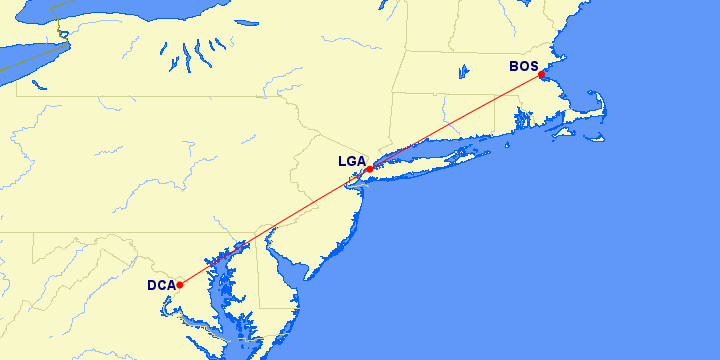 MD-90: 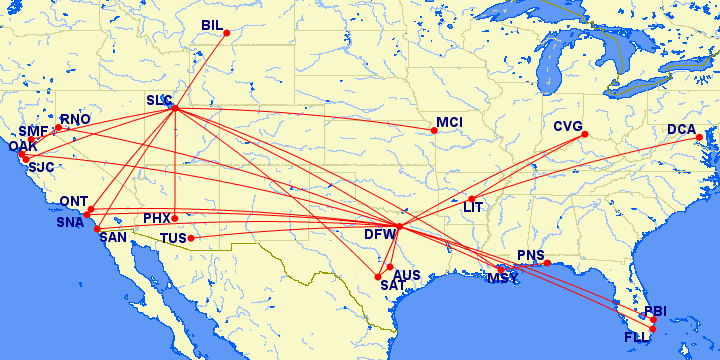 MD-88: 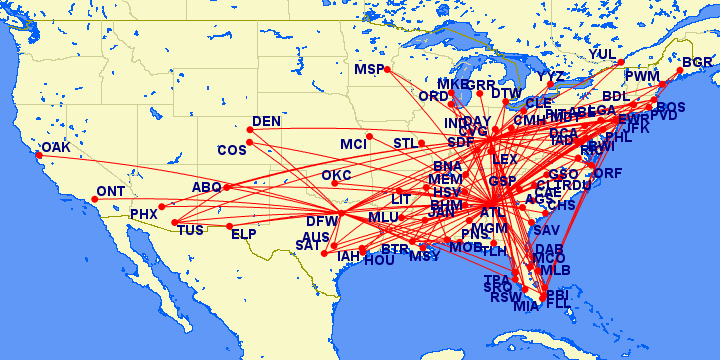 737-800: 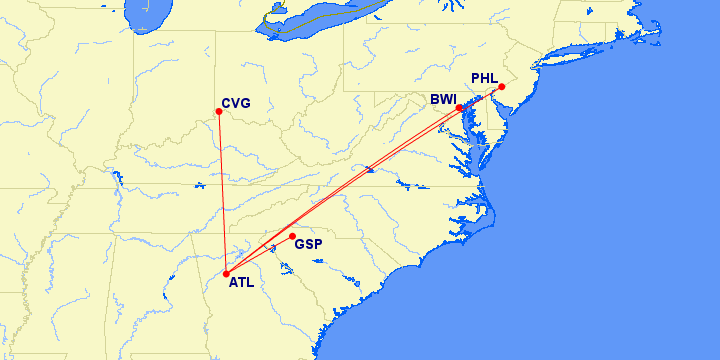 737-300:  737-200:  737-200 Delta Express (IND-ISP is a repositioning flight only): 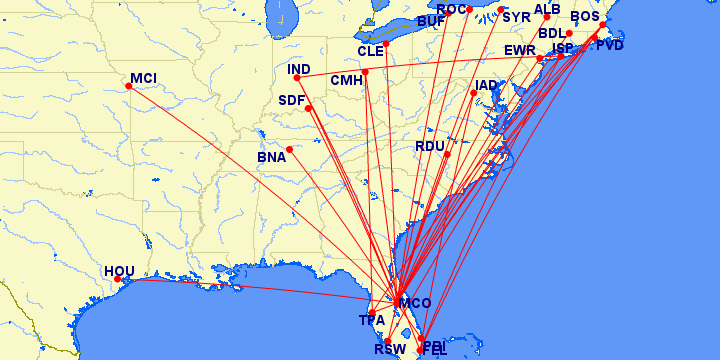 Download Delta Air Lines 1998 v2 Flightplans Here Download Delta Air Lines 1998 v2 Flightplans Here |
|
|
|
Post by chasensfo on Nov 23, 2022 7:25:02 GMT -5
\\US Airways Express 1998 REPRESENTITIVE These are the 1993 plans by Eduardo Villanueva adapted to 1998 FLEET-WISE ONLY. These plans converted the 1993 plans to be using 1998-era aircraft and liveries but the same old flights which also were rather different by 1998. The Stateswest LAX\SFO-based flying is removed, as TransStates took this operation over with Jetstreams and I have released those plans already, but otherwise, there is no change in the flights from 1993, just the aircraft. At that time, the 1997-introduced livery was not on the regional fleet (I think 1999 it started to pop up), and you'll see double aircraft listed as I replaced Metroliners, DHC-7s, etc with the 1998 most similar aircraft operated by the 1998 feeder airlines. cmd320 has these plans in progress. These plans are to complement existing US Airways 1999, TransStates Airlines 1998, US Airways Shuttle 1999, and US Airways Metrojet 1999 plans. Credit goes to Eduardo. Repaints: FS9 native USAir Express old colors 1993 fleet: library.avsim.net/search.php?SearchTerm=usair_express_fleet_1993.zip&CatID=root&Go=SearchDownload US Airways Express REPRESENTITIVE flightplans here |
|
|
|
Post by krsw757 on Nov 23, 2022 13:33:47 GMT -5
Hey chasen, love the newest plans!!! The new Kiwi download though doesn't have the updates, just the scheduled route map and the readme.
|
|
|
|
Post by chasensfo on Nov 23, 2022 22:02:01 GMT -5
Hey chasen, love the newest plans!!! The new Kiwi download though doesn't have the updates, just the scheduled route map and the readme. Whoops, thank you. Fixed. |
|
|
|
Post by dlh747 on Nov 27, 2022 3:59:24 GMT -5
|
|

































